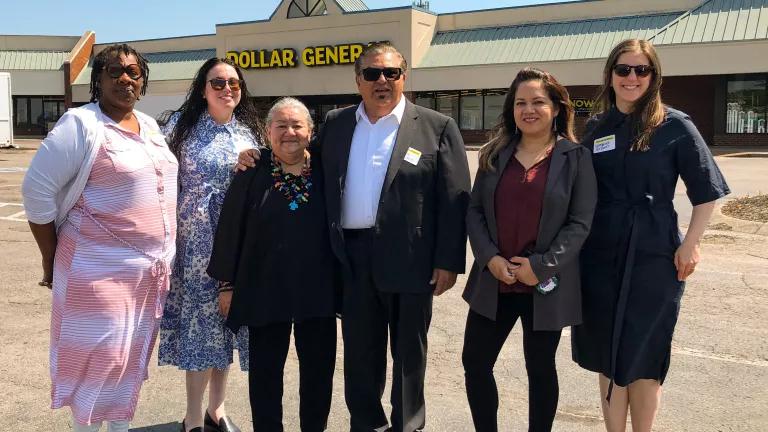Earlier today we filed an administrative complaint with the U.S. Department of Housing and Urban Development calling for an investigation into the City of Albuquerque’s discriminatory zoning of the historic and culturally-rich neighborhood of Martineztown. Under Title VIII of the Civil Rights Act—also known as the Fair Housing Act, U.S. HUD is tasked with making sure recipients of its federal funds, such as Albuquerque, do not discriminate on the basis of race. Yet the City has mistreated this predominately minority community for decades, and we are standing with Martineztown community members asking U.S. HUD and the City to finally right this wrong.
On the 50th anniversary of the Fair Housing Act, we filed this complaint for the Martineztown Working Group, the Historic Neighborhood Alliance, and Loretta Naranjo Lopez--a life-long resident and sixth generation descendant of the community’s founding family.
There are places dotted across the country that connect us with our past, remind us of our story, and seem to defy our normal conception of time. An ancient redwood tree, a national monument, the layers of earth made visible in a deep desert canyon, stepping inside the library of treasured University. These places weave together a tapestry, evolving with each new generation. The neighborhood of Martineztown in Albuquerque, New Mexico is one of these special places.
One of Albuquerque’s oldest communities, Martineztown was settled by the Martin family around the same time the land became part of the U.S. in the Mexican-American War in 1846. Over 160 years later, parts of the neighborhood still retain the look and feel of a traditional New Mexico village, and many families still live on properties passed down through several generations.
The City’s treatment of this community, however, has been nothing short of a tragedy. The City zoned the area for commerce and light manufacturing in the 1950s, and this shift encouraged commercial and industrial development that ate away at the area’s cultural integrity. In the decades since, the City has continued to perpetuate this so-called “mismatched zoning”: light industrial uses directly adjacent to historic homes, mixed use designations where there are only historic single-family homes. In the 1970s, the City recognized that the inappropriate zoning from the 1950s was causing the deterioration of the area, but it didn’t remedy the problem.
Like many cities across the country, Albuquerque has been working since 2015 to update and modernize its zoning code. This was a fantastic opportunity for the City to finally give Martineztown more appropriate zoning. Instead, the City perpetuated the old, deleterious scheme.
The story of Martineztown is all the more heartbreaking considering how differently the City has treated nearby, historic communities that are more white, and more affluent. 71% of the residents of Martineztown are minorities, and the neighborhood is in the 93rd percentile for the entire U.S. for the percentage of its population that earn less than two times the poverty line.
In contrast, the nearby neighborhood called the Huning Highland Historic District enjoys an historic preservation designation requiring city approval for changes to historic properties and much of it is zoned for residential homes. Only 49% of the neighborhood residents are minority. Similarly, the nearby neighborhood of Nob Hill is only 29% minority, and only 29% low income, and zoned mostly for residential homes.
This disparate impact from the City’s decades-long mistreatment of Martineztown, coupled with its failure to finally fix the problem in its most recent zoning code, amounts to a violation of the Civil Rights Act. The residents of this special neighborhood deserve better.
While it is impossible to completely remedy the many decades of mistreatment and deterioration, there are tangible steps the City could take to treat this neighborhood equally to other historic communities and build a brighter future for Martineztown. These include changing the zoning map to accurately reflect actual land uses, including zoning homes that are part of the community’s historic character as Zone District R-1; establish an Historic Overlay Zone for Martineztown that requires City approval before historic buildings are retrofitted; and support residents with listing historic properties under the National and State historic registers.
I am proud to work with Martineztown community leaders in submitting this Civil Rights complaint, and in calling on the City, and Albuquerque’s new Mayor, to finally address this injustice that has gone on for far too long.



